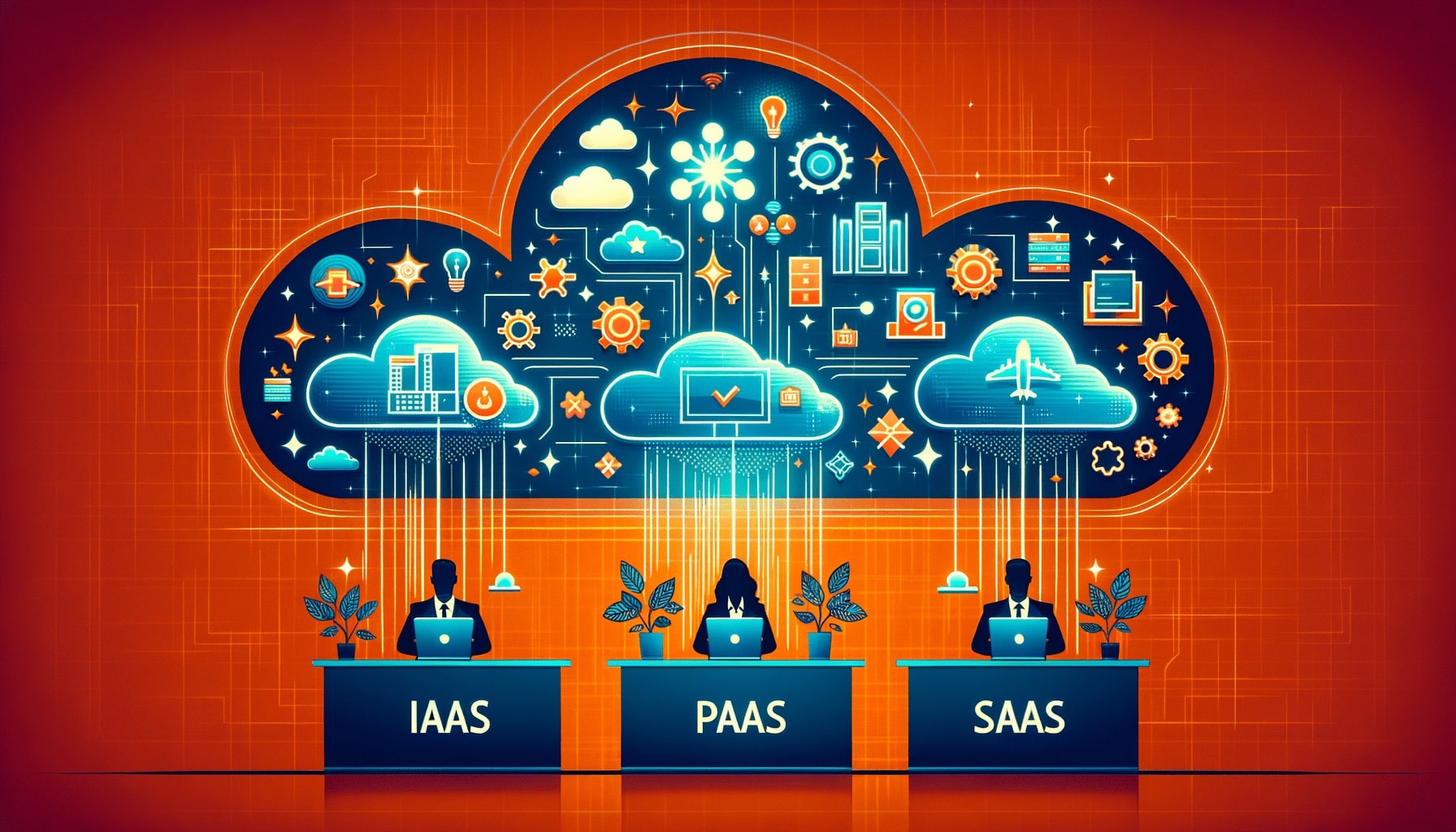In today’s digital landscape, cloud computing has become a cornerstone of modern business operations. As organizations increasingly rely on technology to drive efficiency and innovation, understanding cloud service models is essential. This article aims to demystify the three primary cloud service models: Infrastructure as a Service (IaaS), Platform as a Service (PaaS), and Software as a Service (SaaS). By the end of this article, you will have a clearer understanding of these models, their benefits, and how to choose the right one for your needs.
What Are Cloud Service Models?
Cloud service models are frameworks that define how cloud computing resources are delivered to users. They play a crucial role in enabling businesses to leverage cloud technology effectively. The three primary models—IaaS, PaaS, and SaaS—offer varying levels of control, flexibility, and management, catering to different business needs.
- IaaS provides virtualized computing resources over the internet, allowing businesses to rent IT infrastructure.
- PaaS offers a platform allowing developers to build, deploy, and manage applications without worrying about the underlying infrastructure.
- SaaS delivers software applications over the internet on a subscription basis, eliminating the need for installation and maintenance.
Understanding these cloud computing service models is vital for businesses looking to enhance their operations and drive growth.
Understanding IaaS (Infrastructure as a Service)
IaaS, or Infrastructure as a Service, is a cloud computing model that provides virtualized computing resources over the internet. It allows businesses to rent IT infrastructure, including servers, storage, and networking, on a pay-as-you-go basis. This model offers significant flexibility and scalability, making it an attractive option for businesses of all sizes.
Core Components Of IaaS
- Compute: Virtual machines (VMs) that can be scaled up or down based on demand.
- Storage: Scalable storage solutions for data management and backup.
- Networking: Virtual networks that enable secure communication between resources.
Typical Use Cases For IaaS
- Hosting Websites: Businesses can host their websites on virtual servers without investing in physical hardware.
- Data Storage: IaaS provides scalable storage solutions for data backup and recovery.
- Development And Testing: Developers can quickly set up environments for testing applications without the need for physical infrastructure.
Understanding PaaS (Platform as a Service)
PaaS, or Platform as a Service, is a cloud computing model that provides a platform allowing developers to build, deploy, and manage applications without the complexities of managing the underlying infrastructure. PaaS solutions typically include development frameworks, middleware, and database management systems.
Benefits Of PaaS For Developers
- Faster Development: Developers can focus on coding and application logic rather than infrastructure management.
- Built-In Tools: PaaS offers integrated development tools, making it easier to collaborate and streamline workflows.
- Scalability: Applications can be easily scaled to accommodate increased demand.
Typical Use Cases For PaaS
- Application Development: Developers can create and deploy applications quickly using pre-built tools and services.
- Testing And Staging: PaaS allows for easy testing of applications in a controlled environment before deployment.
- Microservices Architecture: PaaS supports the development of applications using microservices, enhancing flexibility and scalability.
Understanding SaaS (Software as a Service)
SaaS, or Software as a Service, is a cloud computing model that delivers software applications over the internet. Users can access these applications via a web browser, eliminating the need for installation and maintenance on local devices.
Delivery Model Of SaaS
SaaS applications are hosted in the cloud and are typically offered on a subscription basis. This model allows businesses to access the latest software versions without the hassle of updates and maintenance.
Typical Use Cases For SaaS
- Customer Relationship Management (CRM): SaaS solutions like Salesforce provide businesses with tools to manage customer interactions and data.
- Email Services: Platforms like Gmail offer email services without the need for local installation.
- Collaboration Tools: Applications like Slack and Microsoft Teams facilitate team collaboration and communication.
IaaS Vs PaaS Vs SaaS Comparison
When considering cloud service models, it’s essential to understand the differences between IaaS, PaaS, and SaaS. Here’s a comparison of the three models:
| Feature | IaaS | PaaS | SaaS |
|---|
| Control | High | Medium | Low |
| Management | User manages infrastructure | Provider manages platform | Provider manages software |
| Use Cases | Hosting, storage | Development, testing | Business applications |
| Scalability | Highly scalable | Scalable | Limited by provider |
| Cost Structure | Pay-as-you-go | Subscription-based | Subscription-based |
Advantages And Disadvantages
- IaaS: Offers high control and flexibility but requires technical expertise to manage.
- PaaS: Simplifies application development but may limit customization options.
- SaaS: Provides ease of use and accessibility but offers less control over the software.
Benefits Of IaaS, PaaS & SaaS
Each cloud service model offers unique benefits that can significantly impact business operations:
- Cost-Effectiveness: All three models reduce the need for upfront capital investment in hardware and software.
- Scalability: Businesses can easily scale resources up or down based on demand, ensuring optimal performance.
- Flexibility: Organizations can choose the model that best fits their needs, whether they require infrastructure, a development platform, or software applications.
Choosing The Right Cloud Service Model
Selecting the appropriate cloud service model depends on various factors, including:
- Business Needs: Assess your organization’s specific requirements, such as budget, technical expertise, and scalability.
- Security: Consider the security features offered by each model and how they align with your compliance requirements.
- Future Growth: Choose a model that can accommodate your business’s growth and evolving needs.
Best Practices For Using Cloud Service Models
To maximize the benefits of IaaS, PaaS, and SaaS, consider the following best practices:
- Security Considerations: Implement robust security measures, including encryption and access controls, to protect sensitive data.
- Regular Monitoring: Continuously monitor cloud resources to ensure optimal performance and security.
- Compliance: Stay informed about regulatory requirements and ensure your cloud services comply with industry standards.
Future Of Cloud Service Models
As we move into 2025, several trends are shaping the future of cloud service models:
- Increased Adoption Of Hybrid Cloud: Businesses are increasingly adopting hybrid cloud solutions that combine on-premises infrastructure with cloud services.
- Focus On AI And Machine Learning: Cloud providers are integrating AI and machine learning capabilities into their services, enhancing automation and analytics.
- Emphasis On Security: As cyber threats evolve, cloud service providers are prioritizing security features to protect customer data.
Conclusion
Understanding cloud service models—IaaS, PaaS, and SaaS—is essential for businesses looking to leverage cloud technology effectively. Each model offers unique benefits and use cases, making it crucial to assess your organization’s needs before making a decision. By choosing the right cloud service model, businesses can enhance efficiency, drive innovation, and prepare for future growth.
If you are in need of any IT or Cloud services, you can contact us or book a call with us today.
Key Points
- Cloud service models include IaaS, PaaS, and SaaS, each serving different business needs.
- IaaS provides virtualized infrastructure, PaaS offers a development platform, and SaaS delivers software applications.
- Choosing the right model depends on factors like business needs, security, and future growth.
- Best practices include implementing security measures and ensuring compliance with regulations.
- Emerging trends indicate a shift towards hybrid cloud solutions and increased focus on AI and security.
FAQs
What Is IaaS Cloud Service?
IaaS (Infrastructure as a Service) is a cloud computing model that provides virtualized computing resources over the internet, allowing businesses to rent IT infrastructure like servers and storage.
What Is PaaS Cloud Service?
PaaS (Platform as a Service) is a cloud computing model that offers a platform for developers to build, deploy, and manage applications without managing the underlying infrastructure.
What Is SaaS Cloud Service?
SaaS (Software as a Service) is a cloud computing model that delivers software applications over the internet, allowing users to access them via a web browser without installation.
What Are The Benefits Of IaaS, PaaS, And SaaS?
The benefits include cost-effectiveness, scalability, flexibility, and reduced need for upfront capital investment in hardware and software.
How Do I Choose The Right Cloud Service Model?
Consider your business needs, security requirements, technical expertise, and future growth when selecting the appropriate cloud service model.




